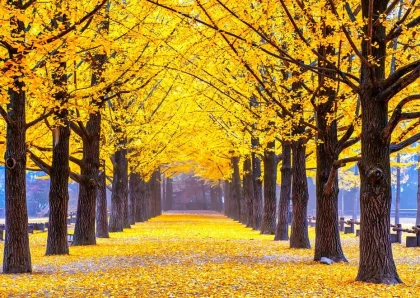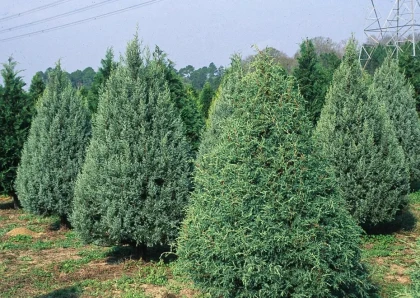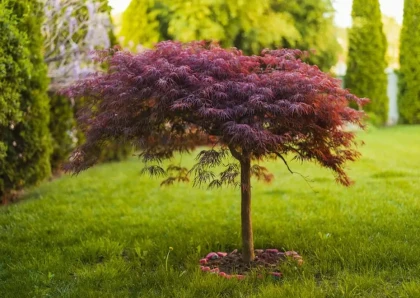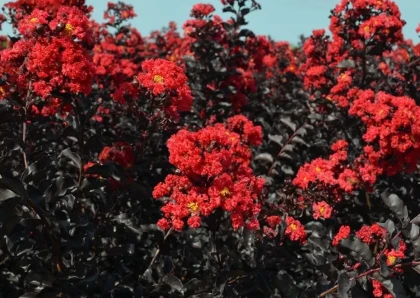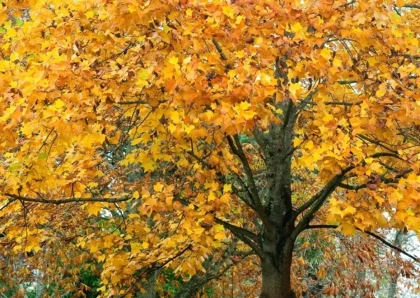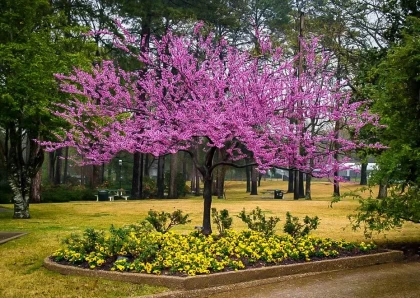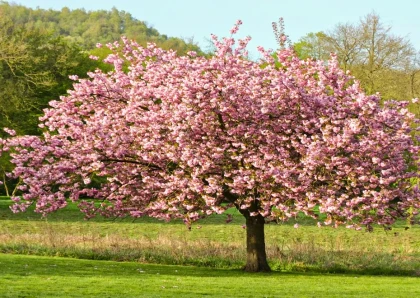
Natchez Crape Myrtle Tree
Overview
History of the Natchez Crape Myrtle Tree
The Natchez Crape Myrtle Tree (Lagerstroemia indica 'Natchez') is a popular ornamental tree native to Asia. It was first introduced to the United States in the late 18th century and has since become a beloved addition to gardens and landscapes across the country.
Detailed Description of the Natchez Crape Myrtle Tree
The Natchez Crape Myrtle is a deciduous tree that can reach a height of up to 30 feet. It has a graceful, vase-shaped form with smooth, cinnamon-colored bark that peels to reveal a light grayish-brown trunk. During the summer, it produces large clusters of white flowers that cover the tree, creating a stunning display. In the fall, the leaves turn vibrant shades of orange and red, adding to its visual appeal.
Types of Natchez Crape Myrtle Trees
There are several cultivars of Natchez Crape Myrtle trees available, each with slight variations in size, flower color, and growth habit. Some popular types include:
- Natchez (Lagerstroemia indica 'Natchez') - The standard variety, known for its white flowers and upright growth habit.
- Dynamite (Lagerstroemia indica 'Dynamite') - Features vibrant red flowers and a slightly more compact form.
- Tonto (Lagerstroemia indica 'Tonto') - Known for its deep pink flowers and a more spreading growth habit.
Importance of the Natchez Crape Myrtle Tree
The Natchez Crape Myrtle tree holds significant importance in landscaping and horticulture. Its beautiful flowers, attractive bark, and vibrant fall foliage make it a popular choice for adding visual interest to gardens and parks. Additionally, it provides shade, attracts pollinators, and acts as a windbreak.
How to Care for the Natchez Crape Myrtle Tree
Caring for the Natchez Crape Myrtle tree is relatively easy. Here are some essential care tips:
- Plant the tree in well-drained soil and choose a location that receives full sun.
- Water the tree regularly, especially during dry spells, but avoid overwatering.
- Prune the tree in late winter or early spring to maintain its shape and remove dead or damaged branches.
- Apply a slow-release fertilizer in spring to promote healthy growth and abundant flowering.
Benefits of the Natchez Crape Myrtle Tree
The Natchez Crape Myrtle tree offers numerous benefits:
- Provides stunning aesthetic appeal with its showy flowers and attractive bark.
- Attracts birds, bees, and butterflies, contributing to the local ecosystem.
- Offers shade and can help reduce energy costs by providing natural cooling to nearby buildings.
- Can be used as a windbreak to protect other plants or outdoor living spaces.
How to Plant the Natchez Crape Myrtle Tree
Follow these steps to plant a Natchez Crape Myrtle tree:
- Choose a planting location with well-drained soil and full sun exposure.
- Dig a hole twice as wide and as deep as the tree's root ball.
- Place the tree in the hole, ensuring the top of the root ball is level with the soil surface.
- Backfill the hole with soil, gently firming it around the roots.
- Water the tree thoroughly to settle the soil.
Different Types of Wood Products from Natchez Crape Myrtle Trees
The wood of the Natchez Crape Myrtle tree can be utilized in various ways. Some common wood products made from this tree include:
- Furniture, such as chairs, tables, and cabinets.
- Decorative items, including picture frames and wooden sculptures.
- Small craft items like cutting boards, coasters, and jewelry boxes.
Cons of the Natchez Crape Myrtle Tree
While the Natchez Crape Myrtle tree has many positive attributes, there are a few considerations to keep in mind:
- It may require regular pruning to maintain its shape and size.
- In colder climates, it may suffer from winter damage or die back to the ground, requiring regrowth from the base in spring.
- The tree can be susceptible to certain diseases and pests, such as powdery mildew and aphids, but proper care and maintenance can minimize these issues.
Frequently Asked Questions (FAQs)
Q: How fast does the Natchez Crape Myrtle tree grow?
A: The Natchez Crape Myrtle tree is known for its moderate to fast growth rate, typically reaching its mature height of 20-30 feet within 10-15 years.
Q: When is the best time to prune a Natchez Crape Myrtle tree?
A: It is recommended to prune the tree in late winter or early spring, before new growth begins, to promote flowering and maintain its shape.
Q: How often should I water a Natchez Crape Myrtle tree?
A: Water the tree deeply once or twice a week during the growing season, especially during dry periods. Adjust the frequency based on rainfall and soil moisture levels.
No listings available
Related Products
Questions & Answers
What do you want to know about this product?
Reviews (5)
Dr. Flora.Greenleaf.42
A Blossoming Beauty for Your Landscape!
The Natchez Crape Myrtle is a showstopper! Its vibrant flowers and attractive foliage make it a standout tree in any garden. Highly recommended!
Arbor_Gur.78
Impressive Growth and Stunning Colors!"
I planted the Natchez Crape Myrtle last year, and it has surpassed my expectations. The tree grew rapidly and its fall foliage is breathtaking. Love it!"
Joewhisper_121
A Reliable and Resilient Ornamental Tree
The Natchez Crape Myrtle is a hardy and low-maintenance tree. It thrives in various climates and soil types, making it a reliable choice for any garden.
TreeEnthusiast_101
Picture-Perfect Tree for Curb Appeal
The Natchez Crape Myrtle adds an elegant touch to my front yard. Its graceful form and profusion of flowers create a picturesque sight. Love the curb appeal!
Botanic14Mastermind
A Majestic Shade Tree with Year-Round Beauty
The Natchez Crape Myrtle is not just a flowering tree; it also provides excellent shade. Its attractive bark and colorful foliage ensure year-round visual interest.





